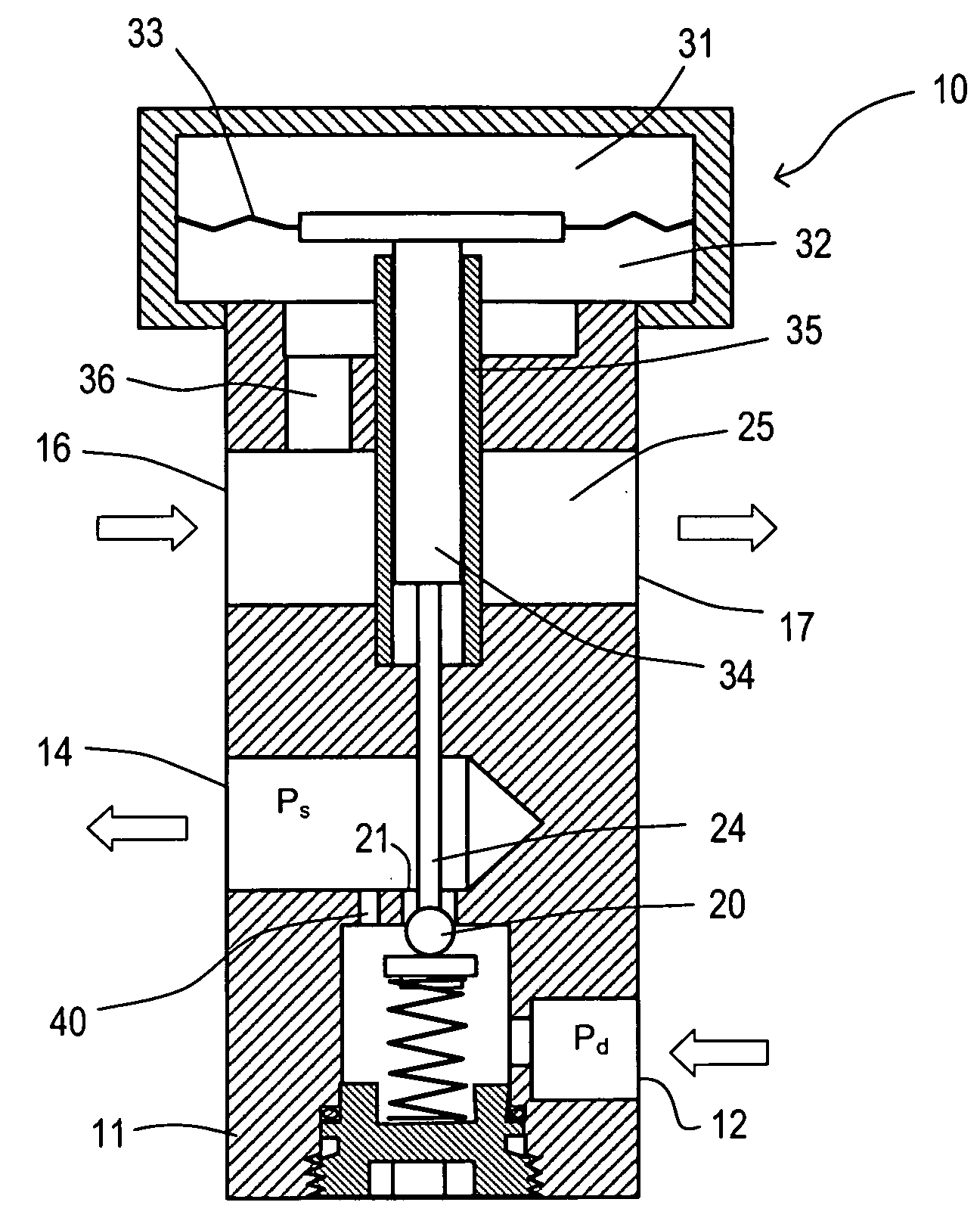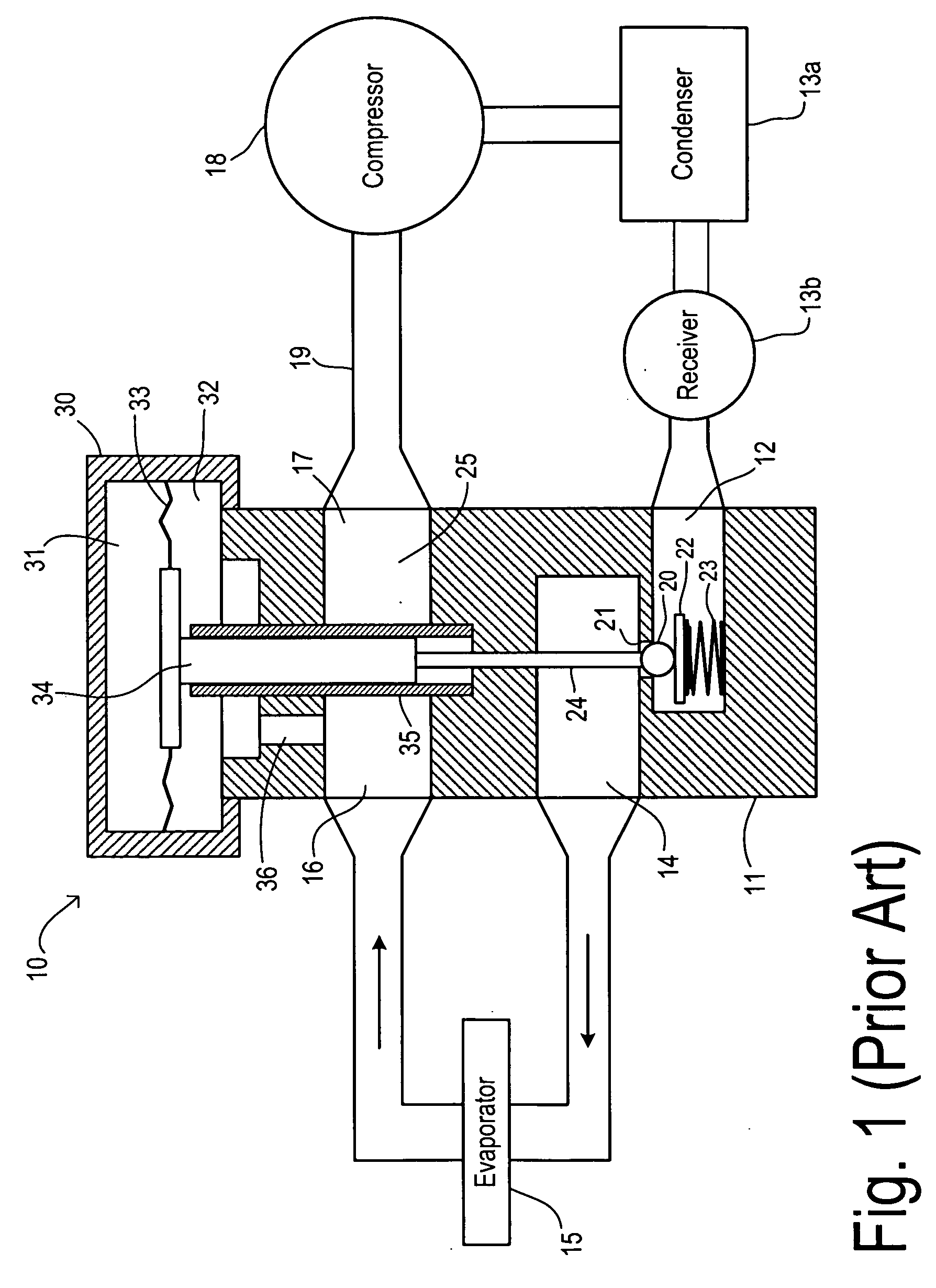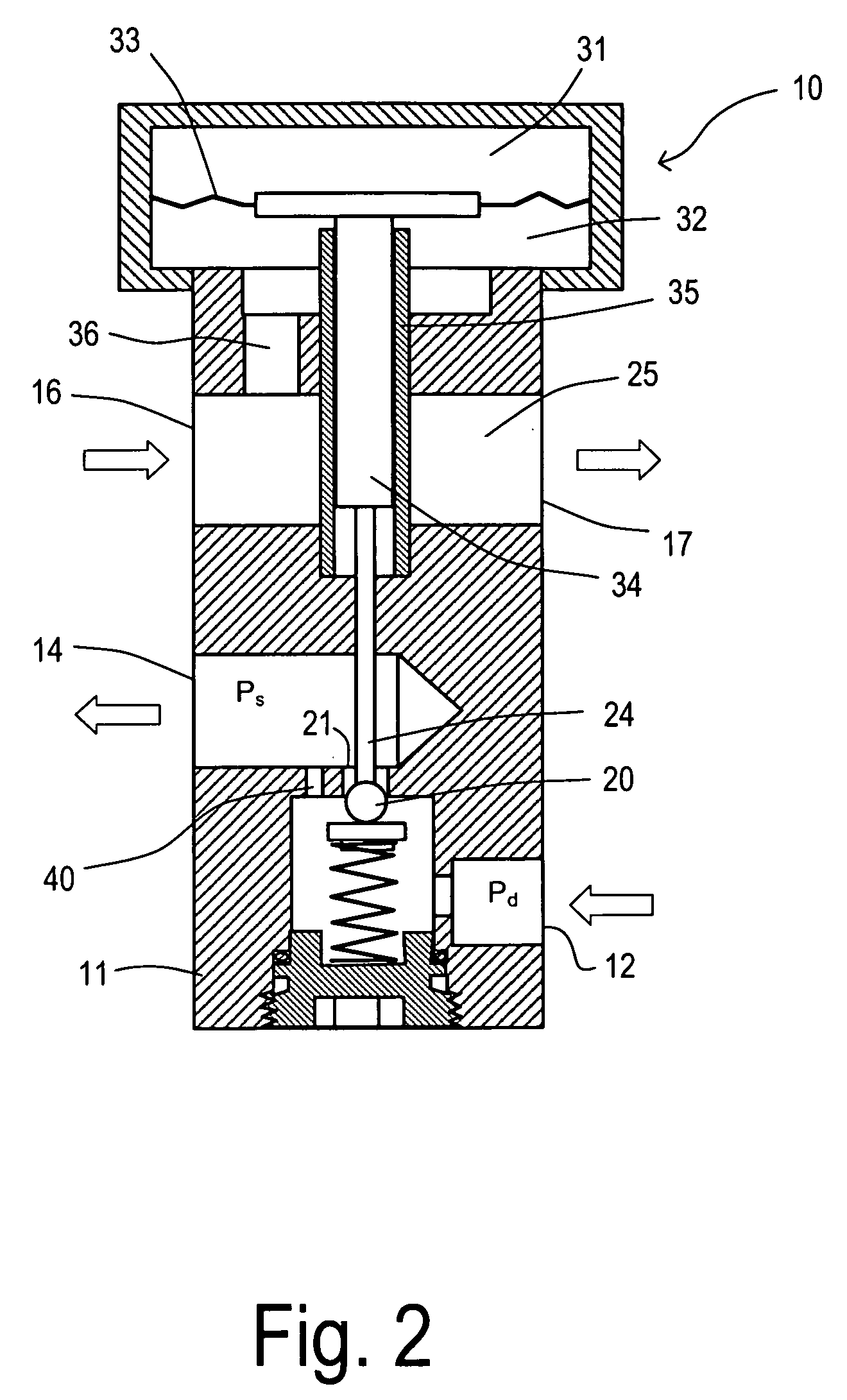Automotive Thermostatic Expansion Valve With Reduced Hiss
- Summary
- Abstract
- Description
- Claims
- Application Information
AI Technical Summary
Benefits of technology
Problems solved by technology
Method used
Image
Examples
Embodiment Construction
[0015]Referring to FIG. 1, a thermostatic expansion valve (TXV) 10 has a valve body 11 with a port 12 (typically referred to as Port A in the art) for receiving liquid refrigerant from a receiver 13b. Valve body 11 has a port 14 (commonly referred to as Port B) coupled to the inlet of an evaporator 15. Valve body 11 has a port 16 (commonly referred to as Port C) receiving superheated gaseous refrigerant from evaporator 15. A port 17 in valve body 11 (commonly referred to as Port D) is coupled to the input of a compressor 18. A line 19 between port 17 and compressor 18 is known as a suction line. Gaseous refrigerant compressed by compressor 18 is provided to condenser 13a for condensing and then to receiver 13b for storing the refrigerant in liquid form.
[0016]A valve element provided between inlet port 12 and outlet port 14 includes a ball valve 20 for seating in an aperture 21 provided in valve body 11 between ports 12 and 14. A biasing member 22 including a set spring 23 normally p...
PUM
 Login to View More
Login to View More Abstract
Description
Claims
Application Information
 Login to View More
Login to View More - R&D
- Intellectual Property
- Life Sciences
- Materials
- Tech Scout
- Unparalleled Data Quality
- Higher Quality Content
- 60% Fewer Hallucinations
Browse by: Latest US Patents, China's latest patents, Technical Efficacy Thesaurus, Application Domain, Technology Topic, Popular Technical Reports.
© 2025 PatSnap. All rights reserved.Legal|Privacy policy|Modern Slavery Act Transparency Statement|Sitemap|About US| Contact US: help@patsnap.com



